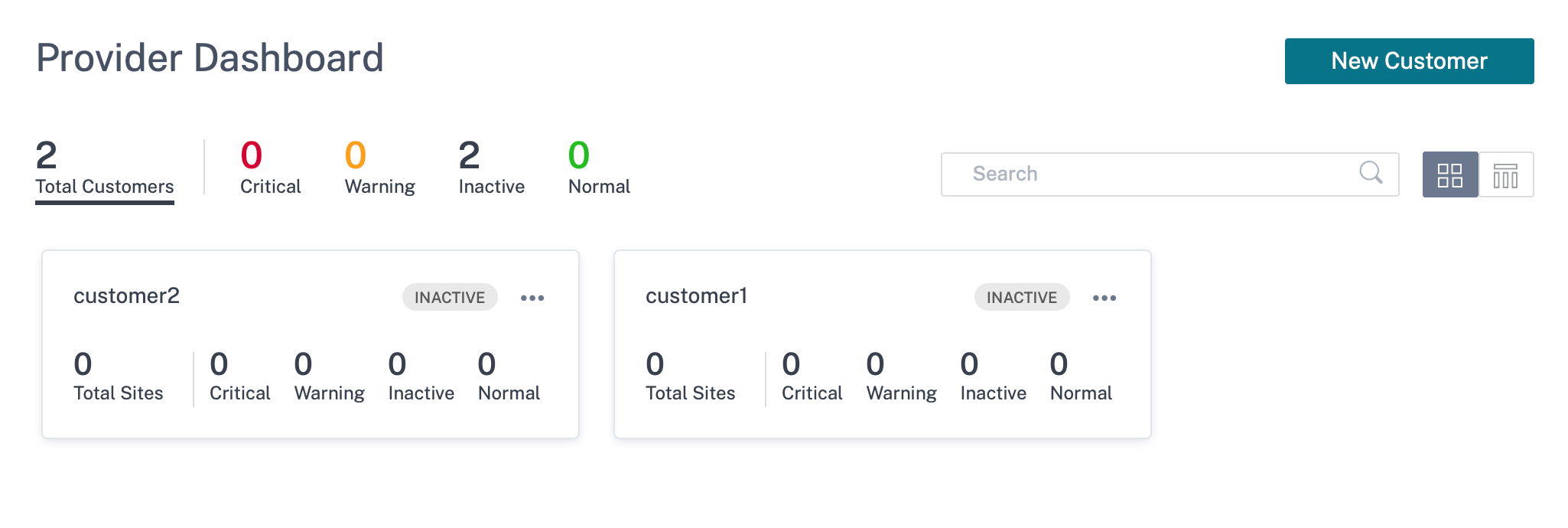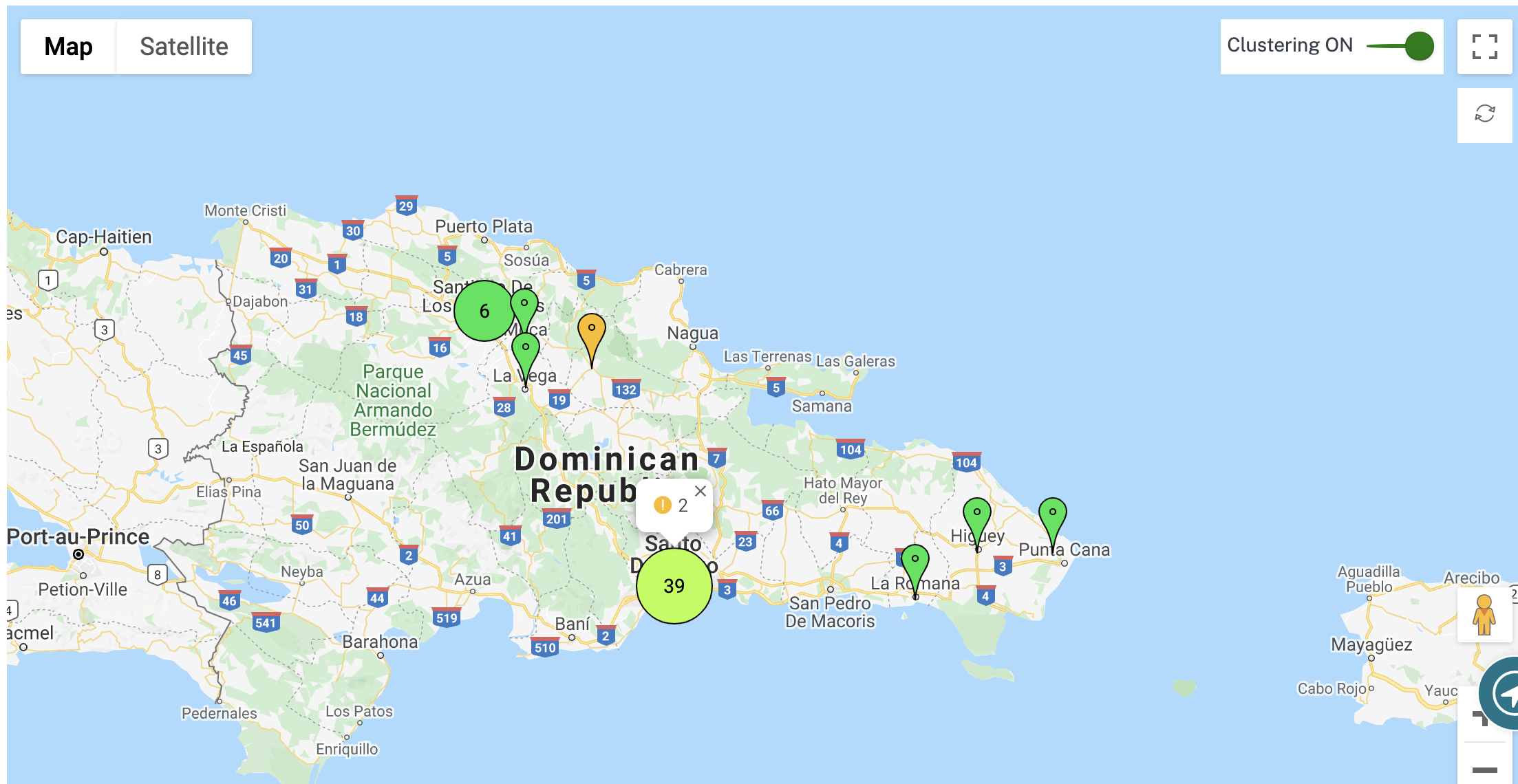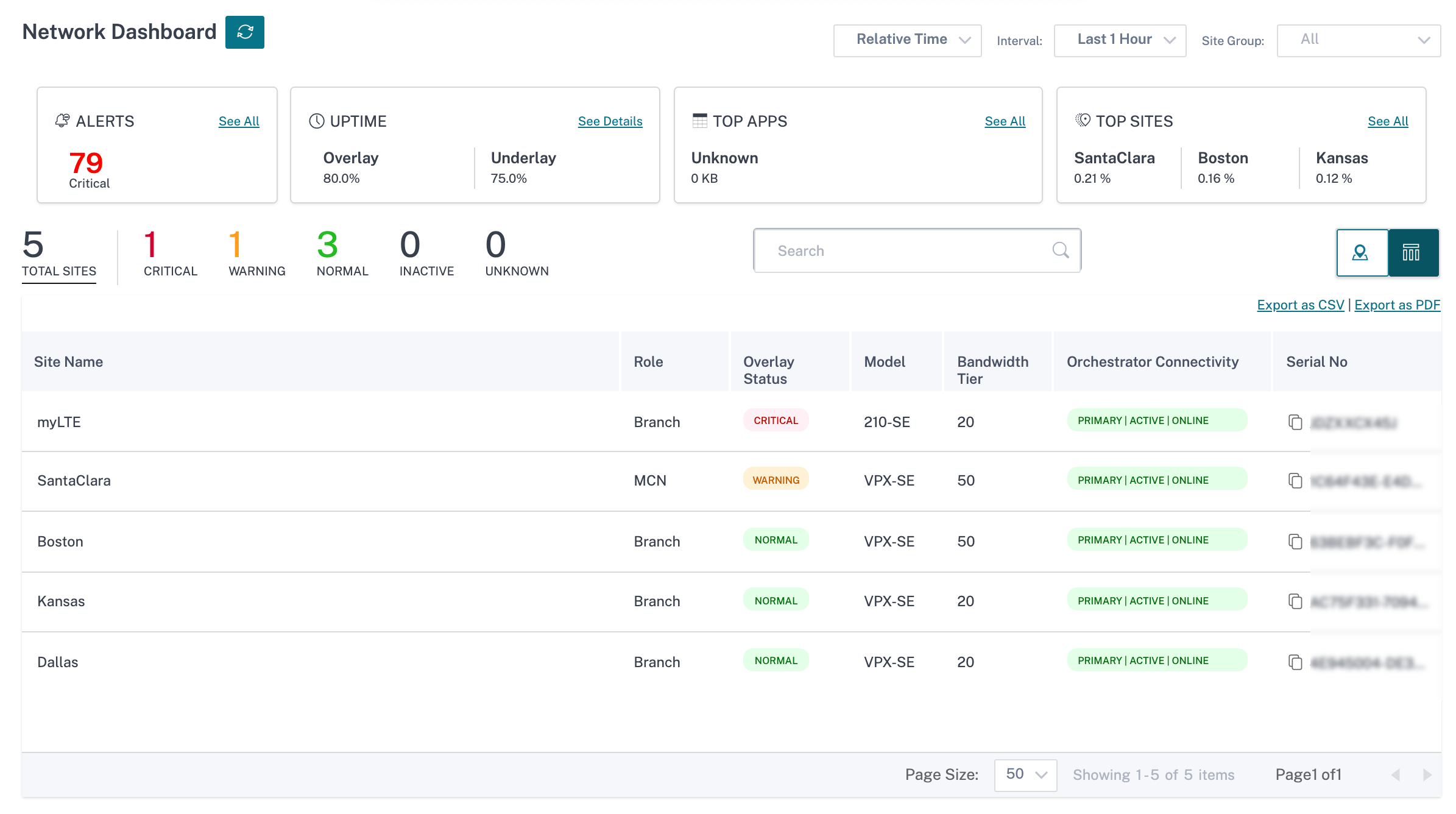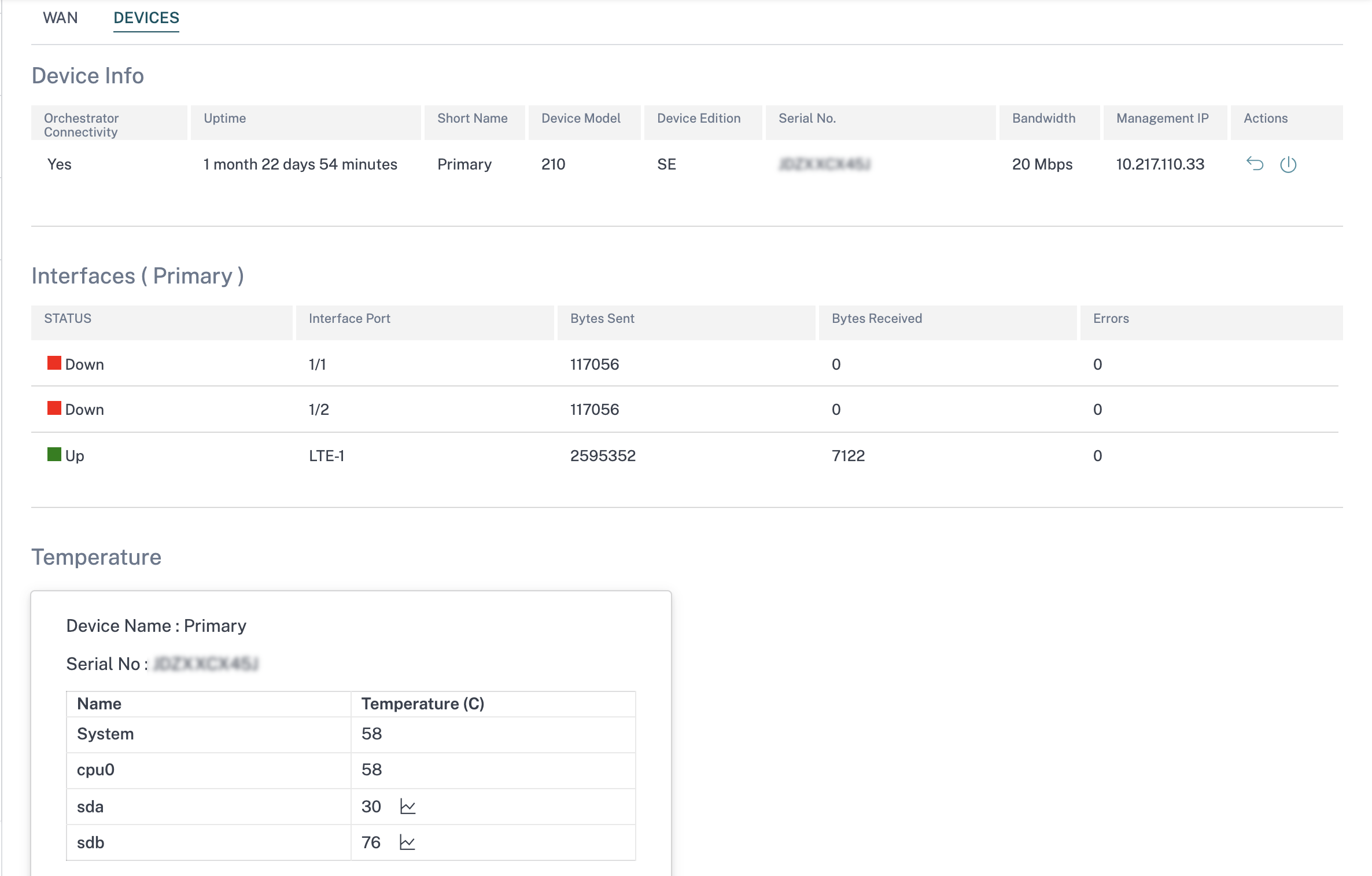Provider dashboard
When you log in as a Citrix partner, the Provider Dashboard appears. It offers a bird’s eye view of all the SD-WAN customers managed by a service provider.

A color-coded health snapshot of each customer’s SD-WAN network is provided, with a provision to drill down into any of them for customer specific details. The dashboard is available in both Tile View and List View.
The color-coding criteria used for the customer’s network are:
- Critical (Red): One or more sites are down
- Warning (Orange): No sites are down but there are one or more critical alerts.
- Normal (Green): No sites are down and there are no critical alerts.
- Inactive (Gray): The network is being configured, but has not been deployed yet.
The color-coding criteria allows administrators to focus on the customers that need their attention.
Customer / network dashboard
The Network Dashboard provides a bird’s eye view of an organization’s SD-WAN network in terms of health and usage across all the sites. The dashboard captures a summary of the network-wide alerts, uptime of the overlay and underlay paths, highlights usage trends, and provides a global view of the network.
The dashboard summarizes the following aspects of a network, with a provision to drill down for more details.
- Critical Alerts: Running count of the critical health alerts, if any, popping up on the network.
- Uptime: Side-by-side comparison of the average uptime offered by the SD-WAN virtual overlay network v/s the physical underlay network
- Usage Trends: Top Apps, based on traffic volume and Top Sites, based on capacity utilization.
- Network View: A visual representation of all the sites across a network, available in both Map View and List View.
To view customer / network dashboard, select Partner > Provider > Customer > Dashboard.

The map provides a real-time view of the global network with all the organization’s sites depicted on a world map, based on their locations. The color of each site reflects its current health.
Following are the color-coding criteria used for each site:
- Critical (Red): At least one overlay virtual path associated with a site is DOWN.
- Warning (Orange): At least one underlay member path is DOWN, but all the overlay virtual paths are UP.
- Normal (Green): All overlay virtual paths and the associated underlay member paths are UP.
- Inactive (Grey): Site is under-configuration and has not been deployed yet.
On hovering over any site, some of the key site-specific details such as the site role, device model, bandwidth tier are displayed. The virtual paths associated with a site show up with suitable color codes that reflect their health. The List View provides the same details for each site, summarized as entries in a table.
Clustering
The Clustering ON feature monitors the consistency, status, and health of various sites of a cluster or a combination of clusters. The Clustering ON service provides a real-time view of sites that help to monitor failover and the current state of the site.
This Clustering ON feature is introduced to manage the high density of sites. It is not recommended to use the clustering off option when there are thousands of sites and it also brings down the performance.

The following table describes the five colors shade that is used for clusters to represent the health of sites:
| Color Legends | Description |
|---|---|
 |
All sites in the cluster are green. That means each site has all the virtual paths, and the associated member paths UP |
 |
All sites in the cluster are orange. That means each site has at least one member path DOWN, but all virtual paths UP |
 |
All sites in the cluster are red. That means each site has at least one virtual path DOWN |
 |
The cluster has a combination of green and orange sites |
 |
The cluster has a combination of red and non-red sites |
You can also verify the network aspect by hovering your mouse on any cluster. The critical or warning alerts are visible on top of the cluster as a pop-up.
If you click the cluster, it zooms into that cluster and shows other clusters. You can see a view bar with the number of clusters. The arrow option helps to bring you back one step. Click the Close (X) button to resume to the original page.
The + New Site option is used to add a new site to the network. For information on site configuration workflow, see Site configuration.
Alternatively, you can view the network summary in List View.

- Clicking any inactive “under-configuration” site that is yet to be deployed, would take you to the site configuration workflow.
- Clicking any active site, which has already been deployed, would take you to the Site Dashboard.
Note
Citrix SD-WAN overlay tunnels are called Virtual Paths. You would typically have one virtual path tunnel between each site and the Master Control Node (MCN), and extra site-site virtual paths as needed. Virtual paths are formed by bonding together the underlay WAN links / paths. So, each virtual path comprises multiple member paths.
This can be shown when a user hovers over the term virtual path or member path.
Site dashboard
The Site Dashboard provides an overview of a site’s health and usage trends.
The dashboard summarizes the following aspects of a site, with a provision to drill down for more details.
- Critical Alerts: Running count of the critical health alerts, if any, popping up on the site.
- Uptime: Side-by-side comparison of the average uptime offered by the SD-WAN virtual overlay paths v/s the physical underlay paths, associated with a site
- Usage Trends: Top Apps and App Categories associated with a site, based on traffic volume
- Site Details: WAN Connections, and Devices associated with a site

Tip
Click See All or See Details to view statistics that are more detailed.
All the overlay virtual path connections associated with a site are displayed with suitable color-coding to reflect the health of each connection. You can select any virtual path connection, to review the corresponding health metrics and trends.
The color-coding criteria used for virtual path connections are:
- Critical (Red): Virtual path is DOWN.
- Warning (Orange): Virtual path is UP, but at least one member path is DOWN.
- Normal (Green): Virtual path and all member paths are UP.
Health metrics
Health metrics and graphical trends around availability, latency, loss, jitter, and throughput are displayed for the selected virtual path connection. These statistics are available in both the directions: WAN to LAN and LAN to WAN. All the metrics can be reviewed against a common timeline, to help quickly narrow down the problem domain while troubleshooting.

You can further drill down into each health metric to get a comparative view of the overlay virtual path and the underlay member paths for the same metric. This would aid in troubleshooting overlay versus underlay issues.

Devices
The Devices section displays details associated with the site’s devices and interfaces. You can also reboot the appliance, reset the appliance configuration or download device logs.
